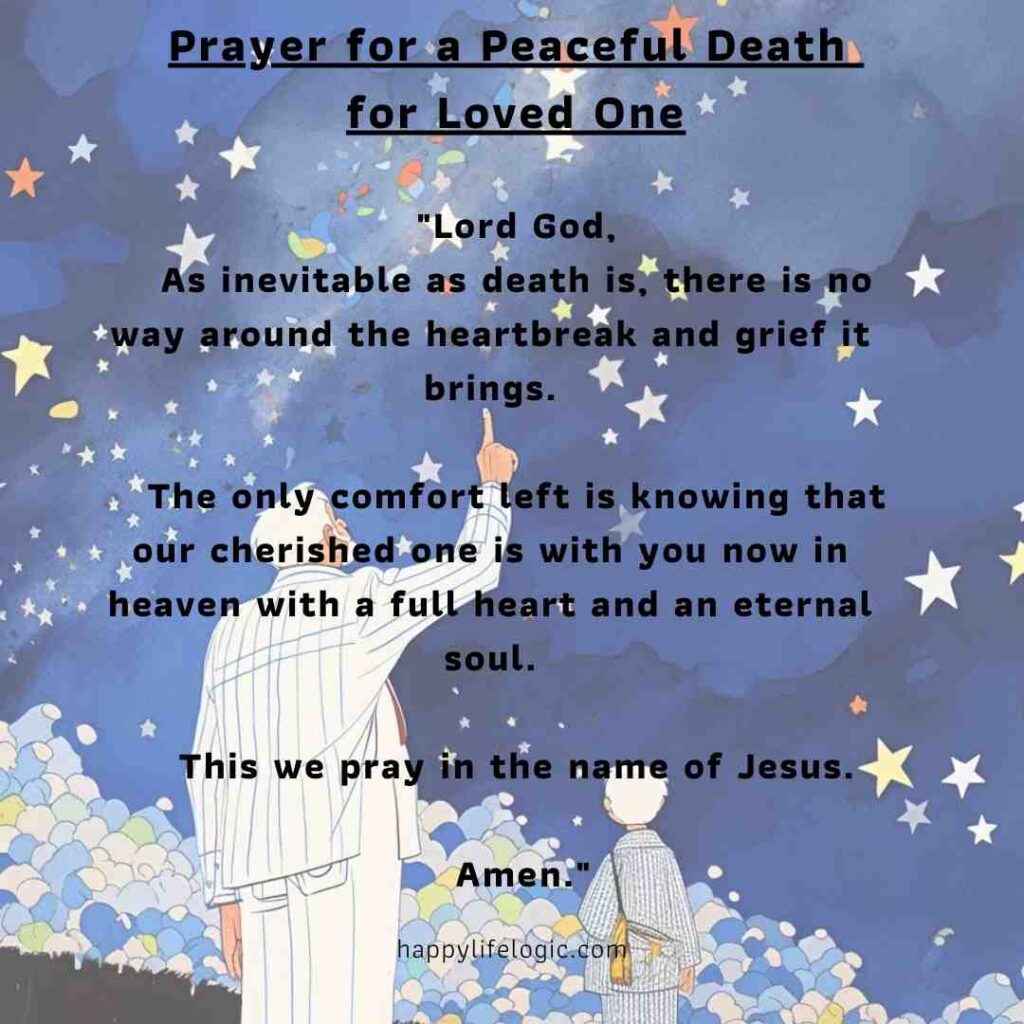Losing someone dear to you is like being plunged into an abyss of emotions.
Looking back on my own experience, I remember the initial darkness, the overwhelming negativity, and the relentless frustration that gripped my heart.
But in the midst of this journey, I discovered the transformative power of the short prayers for a peaceful death of loved one.
It’s a journey that led me from the depths of despair to a place of profound realization, hope, and positivity.
The Healing Power of Short Prayers for a Peaceful Death
As I stumbled through the fog of grief, I began to discover the power of prayer for passing.
Prayer, I realized, was about changing my perspective and finding solace in surrendering my pain to a greater source of love and understanding.
Prayer for a Peaceful Death for Father or Mother
“O God, who has commanded us to honour our father and mother, have compassion in Thy mercy, on the souls of my father and mother; forgive them their sins, and grant that I may see them in the joy of eternal brightness.
Through Christ our Lord .
Amen.”

Prayer for a Peaceful Death for Spouse
“Dear God,
As I stand before you with a heavy heart, I pray for your comforting presence and grace for my beloved spouse, [Spouse’s Name]. As they approach the end of their earthly journey, I humbly ask for a peaceful and painless transition.
May your love surround my spouse, granting them serenity and freedom from suffering. Please be with them as they prepare to leave this world, ensuring they find eternal peace and rest in your loving embrace.
In your name, I pray for a peaceful death for [Spouse’s Name], knowing that they will find their eternal home in your loving care.
Amen.”
Prayer for a Peaceful Death for Family Member
“God, we lift up our family member who is nearing the end of their life.
We pray for a peaceful and painless transition for them. May they find eternal peace and rest in your presence.
Grant them comfort, and surround them with our love during this difficult time.
Amen.”

Prayer for a Peaceful Death for Loved One
“Lord God,
As inevitable as death is, there is no way around the heartbreak and grief it brings.
The only comfort left is knowing that our cherished one is with you now in heaven with a full heart and an eternal soul.
This we pray in the name of Jesus.
Amen.”

Prayer for a Peaceful Death for Friend
“Dear Heavenly Father,
I pray for my friend’s strength and resilience in the face of adversity.
Help them find the inner fortitude to navigate their challenges with grace and determination. May they know they are not alone and that we are here to support them.
Amen.”

Bottom Line
Prayer allowed me to maintain a relationship with my departed loved one, even as I navigated the complexities of grief.
Prayer is a medium to let our loved one in heaven know we miss and love them. It was a testament to the enduring nature of the love we shared.
I invite you, dear reader, to reflect on your own journey through prayer. It is my hope that you find solace in knowing that you are not alone in your pain, that there is a path forward, and that love, in all its beautiful forms, endures.
There are also signs that our loved ones in heaven can come back and see us.
May you discover the transformative power of prayer, the healing light of hope, and the enduring legacy of love as you navigate your own journey through grief, ultimately finding your way to a place of clarity and peace.
Other posts about prayer:


